Do you remember your favorite school lunchbox? It may have featured an image of your favorite cartoon character, band, movie or TV show. (Mine was a 1978 "Muppet Show" lunchbox with a Kermit the Frog thermos inside it.)
The lunchbox has been a key accessory for American schoolkids for more than 60 years, according to Peter Liebhold, a curator with the National Museum of American History.  It's an American status symbol, too. "Today, if you travel to Target, Walmart or other back-to-school retailers, you will see kids and parents constructing their identity through lunchboxes (as well as clothes, backpacks and binders)," Liebhold noted in an e-mail.
It's an American status symbol, too. "Today, if you travel to Target, Walmart or other back-to-school retailers, you will see kids and parents constructing their identity through lunchboxes (as well as clothes, backpacks and binders)," Liebhold noted in an e-mail.
The lunchbox as we know it can be traced back to 1935 when Geuder, Paeschke & Frey produced the first licensed character lunchbox with Mickey Mouse on it. But it wasn't until after World War II when the lunchbox entered its prime.
After the war, the economy, with a growing middle class, was robust, and consumers were willing to spend more money on all kinds of things, including lunchboxes. "Increasingly, identity in the postwar period was seen through consumed items so individuals were picky about what their lunchbox said about them," Liebhold said.
A small exhibition paying homage to this American icon is on display at the Smithsonian's National Museum of American History in Washington. Fans of the lunchbox will delight in the "Taking America to Lunch" display on the lower level. It includes 75 illustrated metal lunchboxes that tell the story of American pop culture. The exhibit also illustrates how lunchboxes changed over the years from plain utilitarian metal to fashionably themed containers.
Fans interested in a larger collection may want to consider a road trip to the Lunchbox Museum in Columbus, Georgia. Museum owner Allen Woodall Jr. claims it's the largest collection of school lunchboxes in the world, with some 2,000 pieces on display. (Ironically, Woodall, 78, never carried a lunchbox to school as a child. He kept his lunch in a brown bag.)
The museum is a labor of love for Woodall, who opened it in 1990. The retired radio executive said his desire to share his passion with others led him to create the museum in his hometown. "Lunchboxes have so much character. To me they are time capsules," he said. "They really bring back a lot of great memories to a lot of people."
Woodall has donated some of his wide-ranging collection to the Smithsonian -- the rest is on display in Columbus and in his home.
"My favorite lunchboxes are 'Dick Tracy' and 'The Green Hornet' because I enjoyed listening to them on the radio."
Woodall said guests to the museum are usually drawn to boxes that represent the era when they were schoolkids. "Western-themed, sci-fi fantasy, Disney-themed, the Beatles and Kiss are popular lunchboxes, too," he said.
One highlight of Woodall's collection includes a "Hopalong Cassidy" lunchbox from the 1950s. Liebhold said this Aladdin Industries piece is usually cited as the first television tie-in with the lunchbox industry. Sales for this back-to-school item skyrocketed to 600,000 in its first year alone.
"I would argue the importance of TV programs to manufacturers and marketers from this anecdote," Liebhold said. The successful launch of this lunchbox was a "win-win" for TV and movie studios seeking to gain exposure and for manufacturers trying to sell lunchboxes.
The classic metal lunchbox era came to an end with concerns (among parents and lawmakers) that pieces of metal could be used as weapons at schools, Woodall said. He said most collectors cite 1985's Sylvester Stallone "Rambo" model (which he has on display at his museum) as the last metal box made for children.
From that point on, box manufacturers switched from metal to softer plastic lunchboxes. "I think the newer boxes lack the character and workmanship than the older metal boxes," he said.
Collectors of lunchboxes will spend from $50 into the thousands of dollars for a box, depending on the condition, Woodall said. "There is definitely an American fascination with lunchboxes, and I'm glad to be a huge part of it."
Original article by Katherine Dorsett Bennett appears on CNN.
Photo courtesy of The Lunchbox Museum / CNN
What was the theme of your favorite childhood lunchbox? Share your memories in the comments section below.

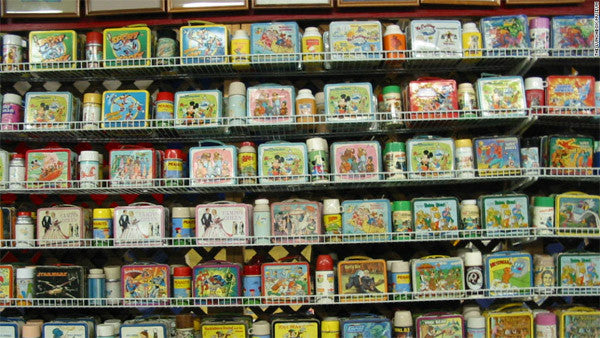
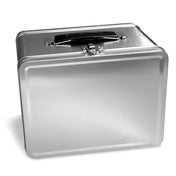
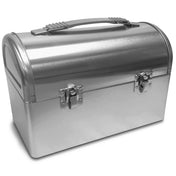
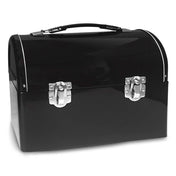
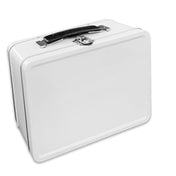
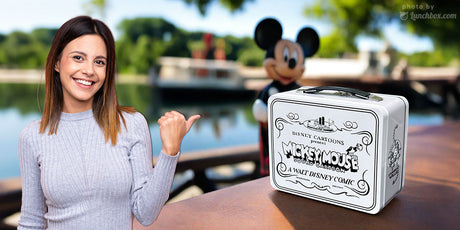
2 comments
I’m looking for a kiss band thermos to go with my lunchbox. Any help would be appreciated. Thank you.
I have a number of old metal lunchboxes. I am wondering where I can sell them.